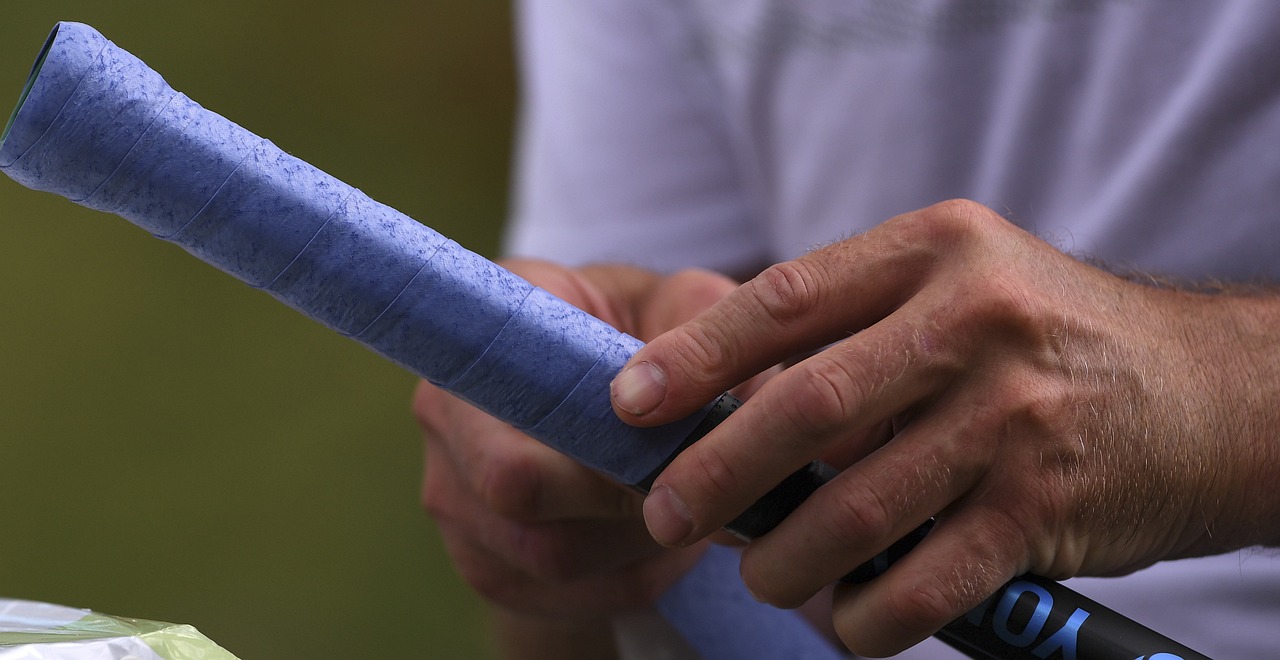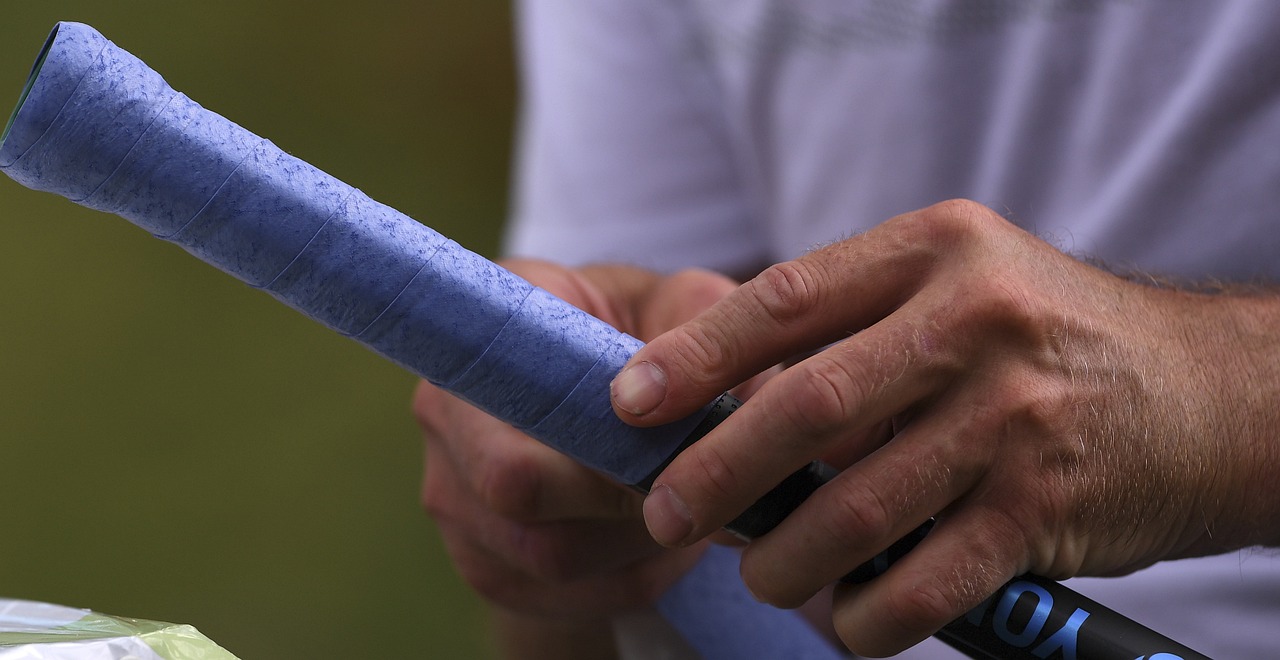Are you a tennis enthusiast looking to improve your volley technique? If so, you may have wondered about the best way to grip a tennis racket specifically for volleys. Mastering the correct grip can make a significant difference in your performance and increase the effectiveness of your shots at the net. In this article, we will explore different gripping techniques for volleys and provide you with insights on finding the technique that works best for you. So, let’s get started and discover the secrets to becoming a master at volleying!

1. Continental grip
1.1. What is a continental grip?
A continental grip is a tennis grip where the base knuckle of your index finger is placed on the third bevel of the racket handle. This grip is often referred to as a “handshake” grip since it resembles the way you would shake someone’s hand. It is considered a neutral grip that allows for versatility in shot selection.
1.2. Why is a continental grip effective for volleys?
The continental grip is highly effective for volleys because it allows for greater control and precision when making contact with the ball. With this grip, the racket face is naturally open, which allows for easier manipulation of the racket angle during volleys. This grip also facilitates a more efficient and direct transfer of power from the arm to the racket, enhancing the speed and accuracy of your volleys.
1.3. How to hold a racket with a continental grip for volleys
To hold a racket with a continental grip for volleys, follow these steps:
- Place your non-dominant hand on the throat of the racket with a relaxed grip.
- Orient the racket so that the strings are perpendicular to the ground.
- Position the base knuckle of your index finger on the third bevel of the racket handle.
- Wrap your fingers around the handle, making sure they are secure but not overly tight.
- Ensure that the heel of your hand is aligned with the side edge of the racket handle.
- Maintain a relaxed and comfortable grip throughout your volleys, allowing for fluid movement and quick adjustments.
2. Eastern grip
2.1. What is an Eastern grip?
An Eastern grip is a tennis grip where the base knuckle of your index finger is positioned on the second bevel of the racket handle. This grip is commonly used for groundstrokes, such as forehands and backhands. However, it can also be utilized for volleys in specific situations.
2.2. Is an Eastern grip suitable for volleys?
While an Eastern grip is not the most ideal grip for volleys, it can still be suitable in certain situations. An Eastern grip provides less control and maneuverability compared to the continental grip due to the more closed racket face. However, for low volleys or defensive volleys where a shorter swing path is required, an Eastern grip can work effectively.
2.3. How to use an Eastern grip for volleys
If you choose to use an Eastern grip for volleys, follow these steps:
- Adopt the same hand positioning as the continental grip, placing your non-dominant hand on the throat of the racket.
- Position the base knuckle of your index finger on the second bevel of the racket handle.
- Be aware that using an Eastern grip for volleys may require additional adjustments in racket angle and swing technique to generate control and accuracy.
- Practice and familiarize yourself with the nuances and limitations of using an Eastern grip for volleys to develop a reliable technique.
3. Semi-Western grip
3.1. What is a semi-Western grip?
A semi-Western grip is a tennis grip where the base knuckle of your index finger is situated between the second and third bevels of the racket handle. This grip is commonly used for modern groundstrokes, but it can also be utilized for volleys in specific circumstances.
3.2. Can you use a semi-Western grip for volleys?
While a semi-Western grip is not the optimal choice for volleys, it can still be used effectively in certain situations. The semi-Western grip offers more control and stability compared to an Eastern grip but may still present challenges due to the relatively closed racket face. It is best suited for volleys that require more power and topspin.
3.3. Applying a semi-Western grip to volleys
If you decide to apply a semi-Western grip to volleys, here’s how you can do it:
- Start with the same non-dominant hand positioning on the throat of the racket as with the other grips.
- Adjust your grip by placing the base knuckle of your index finger between the second and third bevels of the racket handle.
- Maintain a fully relaxed grip to allow for quick adjustments and flexibility in your volleys.
- Keep in mind that using a semi-Western grip for volleys may require additional practice to adapt to the slightly closed racket face and develop the necessary control and touch.
4. Western grip
4.1. Understanding a Western grip
A Western grip is a tennis grip where the base knuckle of your index finger is positioned on the first bevel of the racket handle. This grip is predominantly used for generating heavy topspin on groundstrokes, but it presents challenges when it comes to volleys due to the highly closed racket face.
4.2. Challenges with a Western grip for volleys
Using a Western grip for volleys poses significant challenges due to the extreme closed racket face, which limits control and precision. The grip’s design is tailored for generating topspin and lift on groundstrokes, but these characteristics can be detrimental to the touch and finesse required for volleys.
4.3. Adjusting a Western grip for volleys
If you need to use a Western grip for volleys, consider the following adjustments:
- Begin with the standard non-dominant hand positioning on the racket throat.
- Position the base knuckle of your index finger on the first bevel of the racket handle.
- Be aware that using a Western grip for volleys will require significant adjustments in racket angle, swing technique, and shot selection to compensate for the closed racket face.
- Practice extensively to develop the control and touch necessary to execute volleys effectively with a Western grip, as it may take time to overcome the inherent challenges.
5. Eastern backhand grip
5.1. How does an Eastern backhand grip differ?
The Eastern backhand grip is a variation of the Eastern forehand grip where the hand’s positioning is adjusted to accommodate backhand strokes. It involves placing the base knuckle of the index finger on the third bevel of the racket handle, similar to the continental grip. This grip is commonly used for one-handed backhands, but it can also be applied to volleys in certain situations.
5.2. Is the Eastern backhand grip suitable for volleys?
While the Eastern backhand grip is primarily suited for one-handed backhands, it can also be used for volleys in specific scenarios. This grip allows for more stability and control compared to a Western grip, making it a viable option for volleys that require precision and finesse.
5.3. Adapting the Eastern backhand grip for volleys
To adapt the Eastern backhand grip for volleys, follow these steps:
- Begin with the same non-dominant hand positioning as with other grips.
- Position the base knuckle of your index finger on the third bevel of the racket handle, similar to the continental grip.
- Keep in mind that the Eastern backhand grip may require adjustments in racket angle and shot selection to optimize control and accuracy during volleys.
- Practice regularly with this grip to develop the necessary skills and familiarity required to excel in volleying using the Eastern backhand grip.
6. Two-handed grip
6.1. What is a two-handed grip?
A two-handed grip involves holding the tennis racket with both hands on the handle. Typically, the dominant hand is positioned lower on the grip, closer to the racket’s end, while the non-dominant hand rests above it. This grip is widely used for executing powerful groundstrokes, but it can be utilized for volleys as well.
6.2. Can a two-handed grip be used for volleys?
While a two-handed grip is not the traditional choice for volleys, it can be effective in specific situations. The two-handed grip offers increased stability and control, making it beneficial for volleys that require more power or when dealing with strong shots from opponents.
6.3. Techniques for volleys with a two-handed grip
If you choose to use a two-handed grip for volleys, consider incorporating the following techniques:
- Place your non-dominant hand above your dominant hand on the handle, adjusting the grip to a comfortable position for both hands.
- Ensure that the contact point during volleys is between your dominant hand and the racket strings.
- Focus on maintaining balance and stability, utilizing the strength and coordination between your hands to control the racket head through volleys.
- Regularly practice volleys with a two-handed grip to refine your technique and develop a seamless transition between groundstrokes and volleys.
7. The importance of grip size
7.1. Understanding grip size
Grip size refers to the circumference of a tennis racket handle. It plays a crucial role in achieving maximum control, comfort, and stability while gripping the racket. Grip size can vary, and choosing the appropriate grip size is essential for optimal performance on the court.
7.2. Why does grip size matter for volleys?
The correct grip size is particularly important when it comes to volleys because it directly affects the comfort, control, and maneuverability of your racquet. An ill-fitted grip size may result in unnecessary strain, reduced control, and potential hand or arm injuries. With the right grip size, you can maintain a firm yet relaxed hold on the racket, enabling efficient shot execution and minimizing the risk of injury.
7.3. Choosing the appropriate grip size for volleys
To choose the appropriate grip size for volleys, consider the following guidelines:
- Measure the grip size by placing your non-dominant hand in a comfortable, relaxed position.
- Use a ruler or a grip-sizing tool to measure the distance from the bottom lateral crease of your palm to the top tip of your ring finger.
- Match the measured distance to the appropriate grip size provided by manufacturers or tennis specialists.
- Consider individual preferences, such as adding overgrips or reducing the grip size with an additional layer of tape to achieve the desired comfort and feel.
- Consult with tennis professionals or experts for further guidance in selecting the ideal grip size based on your hand measurement and playing style.
8. Proper hand positioning
8.1. The role of hand positioning for volleys
Proper hand positioning during volleys is crucial for achieving control, power, and precision. By maintaining correct hand positioning, you can effectively direct the racket head to make clean contact with the incoming ball, enabling accurate shot placement and efficient shot execution.
8.2. Common hand positioning mistakes to avoid
When it comes to hand positioning for volleys, it is essential to avoid the following mistakes:
- Gripping the racket too tightly, which restricts movement and hampers flexibility during volleys.
- Allowing the wrist to collapse or become too stiff, limiting the ability to adjust the racket angle.
- Holding the racket too close to the throat or too far towards the end, compromising balance and stability.
- Placing the non-dominant hand too high or too low on the racket, disrupting coordination and control.
8.3. Tips for maintaining proper hand positioning during volleys
To maintain proper hand positioning during volleys, consider the following tips:
- Utilize a relaxed grip, allowing for fluid movement and quick adjustments.
- Keep the wrist firm but flexible, allowing for precise control of the racket head.
- Position the non-dominant hand slightly above the racket head, maintaining a steady and supportive role.
- Maintain a balanced grip point along the racket handle, ensuring stability and control without compromising maneuverability.
- Regularly practice volleys with a focus on maintaining proper hand positioning, reviewing video footage or seeking feedback from coaches or experienced players to identify any areas for improvement.
9. Grip pressure
9.1. The impact of grip pressure on volleys
Grip pressure refers to the amount of force applied to holding the racket during volleys. The level of grip pressure significantly affects control, touch, and power during volley execution. Maintaining the appropriate grip pressure is vital for achieving clean contact, control, and consistency in your volleys.
9.2. Finding the right grip pressure for volleys
To find the right grip pressure for volleys, follow these guidelines:
- Start with a relaxed grip to allow for ease of movement and flexibility during volleys.
- Experiment with different grip pressures during practice sessions, ranging from light to moderate to firm.
- Pay attention to the results and feel of each grip pressure, noting the level of control, touch, and power generated.
- Strive for a balance between a grip that is secure enough to maintain control of the racket and shots while remaining relaxed enough to facilitate fluidity and feel.
- Regularly evaluate and adjust your grip pressure based on match conditions, opponent shots, and feedback from on-court performance.
9.3. Techniques to adjust grip pressure during volleys
To adjust grip pressure during volleys, consider the following techniques:
- During setup and preparation, maintain a light grip pressure to minimize tension and allow for quick adjustments.
- As you anticipate the incoming shot, gradually increase grip pressure to ensure control and stability when making contact with the ball.
- Upon contact, momentarily tighten the grip to provide a solid and controlled racket face.
- Immediately after contact, release the grip pressure to facilitate follow-through and fluid racket movement.
- Practice drills and matches where you consciously focus on adjusting grip pressure to develop a natural feel for maintaining the appropriate grip tension during volleys.
10. Reflex and anticipation
10.1. Utilizing reflexes and anticipation for volleys
Reflexes and anticipation are essential elements in successful volley play. By effectively utilizing reflexes and anticipation, you can anticipate the direction and pace of the incoming shot, react swiftly, and position yourself optimally to execute volleys with precision.
10.2. Training exercises to improve reflexes and anticipation
To improve your reflexes and anticipation for volleys, try incorporating the following training exercises:
- Reaction drills: Use a tennis ball machine or have a partner feed you balls randomly, and practice reacting quickly to each shot by executing volleys.
- Shadow volleys: Stand at the net and practice your volley technique without hitting a ball, focusing on positioning and footwork to anticipate the incoming shot.
- Vision training: Engage in visual exercises, such as tracking moving objects or using specialized training aids, to enhance your visual perception and reaction speed.
- Match simulations: Incorporate match-style scenarios into your training sessions, where you simulate game-like situations and practice reacting to different shot placements and speeds.
- Cross-training: Participate in other sports or activities that require quick reactions and rapid decision-making to improve your overall reflexes and anticipation skills.
10.3. How grip affects reflex and anticipation in volleys
The grip you choose can influence how quickly you can adjust and react to incoming shots during volleys. Grips that allow for a more open racket face, such as the continental grip, provide greater versatility and enable faster adjustments when dealing with unexpected shots. This flexibility enhances your reflexes and anticipation, allowing for more precise decision-making and better positioning at the net during volleys. Regular practice and experience with different grips and shot scenarios can further refine your reflexes and anticipation skills.

